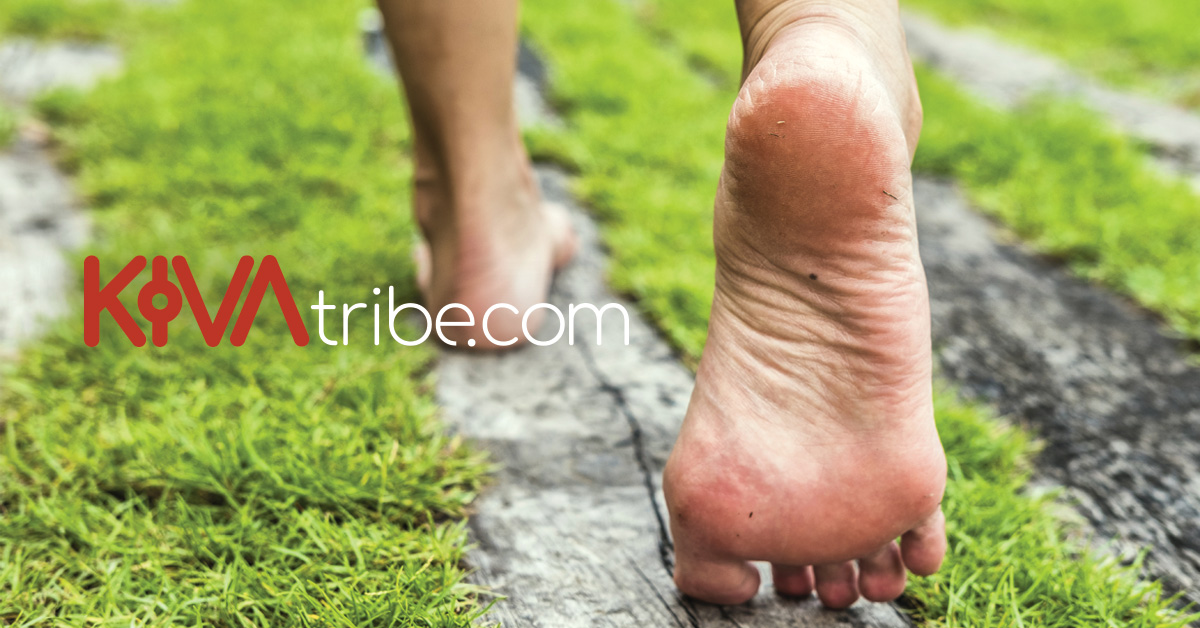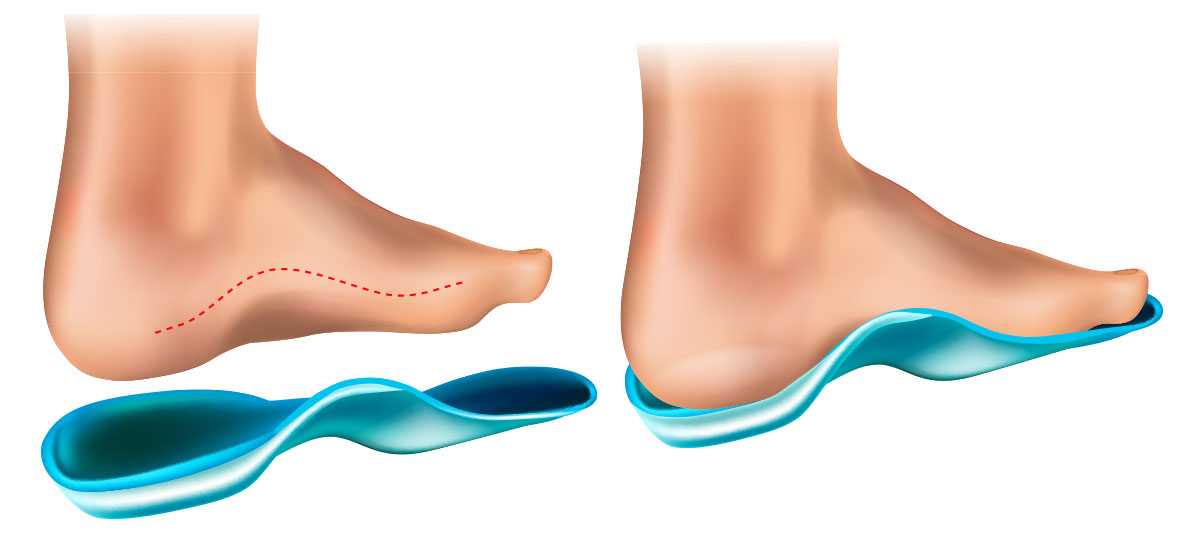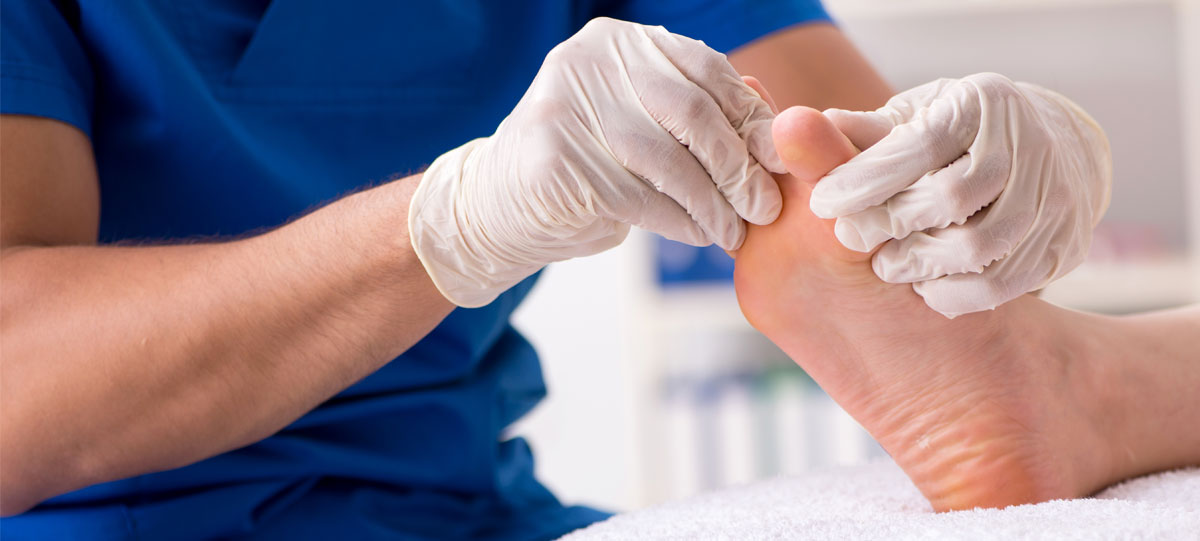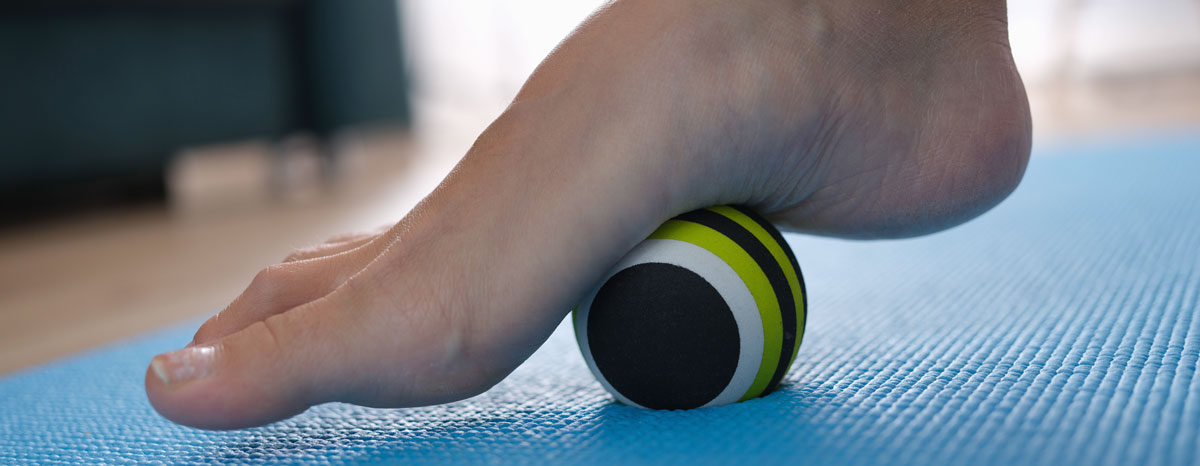
What are Intrinsic Foot Muscles?
It sounds complicated but it’s actually not – intrinsic foot muscles simply means the small muscles that start and end within the foot, as opposed to extrinsic foot muscles, which are found in the lower leg.
The intrinsic foot muscles form the arch of the foot, although technically there are three arches; two longitudinal arches, which run the length of the foot, and one transverse arch which runs across the width of the foot.
According to experts, strengthening your intrinsic foot muscles can have wide ranging benefits (more on this later), but what actually causes weak foot muscles in the first place? Well, there are many who believe it’s due to our footwear choices.
Do Shoes Cause Weak Foot Muscles?
Dr Ray McClanahan, podiatrist, has lots of information on his site about how conventional shoes cause weak foot muscles (amongst other things – see our articles What are Barefoot Shoes?, Benefits of Barefoot Shoes, and Are High Heels Bad for You?), and he’s joined by a list of well informed scientists; Katy Bowman, biomechanist, Dr Peter Francis PhD, sports scientist and physical therapist, Christopher Ionnau, sports scientist, Dr Emily Splichal, podiatrist, and more.
Dr McClanahan explains that conventional shoes are problematic for foot muscles for two reasons. Firstly, the tapered toe box (read: pointy toes) moves the big toe out of correct alignment, which deactivates the intrinsic foot muscles¹, and secondly, they often provide external arch support – that raised area of the shoe under the arch of your foot.²
Does Arch Support Weaken your Feet?

Indeed we often add orthotics for arch support, mistakenly believing that this will contribute to good foot function. Which is totally understandable when the importance of arch support is promoted to us so frequently.
If you’re a little confused by now, you have every right to be, as you’ve probably heard for years that arch support is a good thing. And let’s be clear, all the experts we’re discussing are quick to point out that there are situations when external arch support IS a good thing, for example for certain specific health conditions and short term after injury.
However, Dr Peter Francis explains that for most able bodied people who have no foot issues, wearing external arch support is like wearing a cast when your arm is not broken.³
Limiting movement and preventing muscles from working for an extended period of time causes the muscles to get weaker, as anybody who’s ever had a cast will tell you, the affected limb needs time to return to full strength after the cast is removed.
The Importance of Intrinsic Foot Muscles
But it doesn’t end there. Dr Patrick McKeon, professor at Ithaca College’s school of Health Sciences and Human Performance, has investigated the importance of the intrinsic foot muscles in his research.
He likens the intrinsic foot muscles to the core of the body, as they have a stabilising role, coining the term ‘foot core’. He explains that there is an important feedback loop between the intrinsic and extrinsic foot muscles that helps us to regulate our movement and avoid injury, and that shoes actually interrupt this feedback loop, which can lead to overuse injuries.⁴
Weak Foot Muscles Cause Health Problems

But it’s not just injuries that can be caused by weak foot muscles. Dr McClanahan lists a range of common foot complaints that are linked to the use of conventional footwear⁵:
- Bunions
- Hammertoes
- Corns & calluses
- Ingrown toenails
- Tailor’s bunions
- Heel pain
- Metatarsalgia
- Athlete’s foot infection
- Tendon imbalances
- Morton’s neuroma
- Bursitis
- Fungal toenail
- Black toenails
- Blisters
Dr Emily Splichal highlights plantar fasciitis and metatarsalgia as very common foot issues that are often due to weakness of the intrinsic foot muscles.⁵
Dr Anna Hammond, physical therapist, adds that many types of foot, heel and achilles tendon pain, locked arches, hip and core problems can all benefit from improving foot strength.⁶
Not to mention pelvic floor. Yes, pelvic floor. And she’s not alone on this one – Katy Bowman and Dr Splichal both have further information on this issue.
Katy Bowman explains that butt muscles specifically are really important for a healthy pelvic floor⁷. And Dr Splichal explains how the health of your feet affects the health of the rest of the body, including your butt muscles; the foot muscles are connected all the way up to the chin via a chain of muscles called the deep front line, so when they’re weak, it can affect the functioning of many structures further up.⁸
She says that when your intrinsic foot muscles are weak, your big toe struggles to stay in alignment. This means you don’t get a proper push off the big toe as you are walking which is essential for strong glutes, resulting in weak glutes which she terms ‘bunion booty’.⁹
Dr Hammond says this then becomes a chicken and egg situation, where the improper positioning of feet and pelvis start to affect each other.⁶
Who knew these small muscles could play such a big role in whole body health!
Benefits of Strengthening your Intrinsic Foot Muscles

The good news is, strengthening your intrinsic foot muscles, or foot core, can help with all of the above!
Katy Bowman says that strengthening your foot core can improve¹⁰:
- Nerve health
- Bone density
- Osteoarthritis
- Pelvic floor disorders
- Children’s physical and mental development
- Health care funding
- Reduce lower leg amputations
- Diabetes
- Metabolism
- Balance
- Fall risk
But how do you go about it?
We’ve compiled advice from a number of these experts to give you a step by step plan to strengthen your own foot muscles (please consult with your healthcare provider to ensure that these stretches and exercises are suitable for you, especially if you have a connective tissue disorder, hypermobility or any diagnosed health condition).
Intrinsic Foot Muscle Strengthening Plan
(For exercise specifics see below)
- Start with calf stretches and rolling out the plantar fascia and calves daily to release tension caused by limited range of movement in conventional shoes and increase ankle mobility.
- If you have bunions, do a bunion massage and stretch.
- Exercise your feet – start with 5 minutes a day and work up to 10-15 minutes a day.
- Start spending time around the house, garden, or other convenient places without shoes on to build up the strength in your feet naturally. Start slow and build up.
- Consider taking up barefoot activities like yoga, pilates, martial arts, or functional movement.
- If your toes are misaligned, look into getting a pair of toe spacers, ideally one that you can wear inside your shoes while you exercise. Start wearing the toe spacers regularly for short periods and build up slowly.
- Consider buying a pair of barefoot shoes and slowly switch to wearing these more than your conventional shoes. (More information on barefoot shoe transition How to Transition to Barefoot Shoes and Are High Heels Bad for your Feet?)
Exercises
Remember that it took your body years to get here and it may take years to move in a new direction. Many people start to see small changes very quickly, but it will most likely take many months of consistency to achieve big changes.
Ankle Mobility
Experts like Katy Bowman stress the importance of ankle mobility in regaining intrinsic foot muscle strength. If you’re struggling to get down into a full, deep squat, it could well be due to lack of ankle mobility.
Calf Stretches

Calf stretches are helpful to increase ankle mobility, and can be performed on a half roller or folded up mat or towel.
Instructions:
Put the ball of one foot on the half roller, towel or mat and carefully step forward with the other foot. Hold for 30-60 seconds on each leg.
Everyone’s body is different, and some of us may not need to step forward very far to feel the stretch along the back of the calf. Perhaps the second foot will only come forward as far as the first, or perhaps it will be slightly forward or slightly behind the stretching leg.
Don’t push past your comfortable limits. You should feel the stretch but it should not be uncomfortable, painful, or extreme. Be gentle with your body and over time you will start to see changes.
Rolling with a Ball

You can use a small, hard ball around 5cm/2 inches in diameter and gently roll in the soft tissues in the middle of your foot and the soft tissues of the calf. You only need a minute or so on each foot or calf if you’re doing it every day. More is not necessarily better – over releasing the soft tissues will not bring benefits faster.
Bunion Massage and Stretch
If you have bunions, you can also add a little massage with your fingers between the first and second metatarsals to release the soft tissues. Use massage oil to make it easier. A minute or so on each foot is enough.
Take a small band or make one from a piece of thick elastic and place it around both big toes. Place a small ball (firm, but not too hard) around 3 or 4cm/1.5 inches diameter between your two big toe joints and pivot your ankles inward slightly to feel the stretch on the big toes.
Again, take very good care not to overstretch. You’re just looking for a gentle stretch, overstretching is unhelpful.
Never do this exercise without the ball in place.
Here’s a useful video to watch: https://www.youtube.com/watch?v=QFgtFRrWses
Short Foot
One of the most frequently recommended exercises for strengthening the intrinsic foot muscles is short foot.
Dr McKeon says this exercise has especially positive results for patients suffering from ankle sprain, shin splints, and plantar fasciitis. It’s even been shown to improve the strain suffered by individuals with flat feet.³
We couldn’t do a better job at explaining the short foot exercise than Dr Splichal, so here’s a link to her video.
https://barefootstrongblog.com/2019/02/22/are-you-doing-short-foot-correctly-clearing-the-confusion/
At the beginning you may only be able to do a few before your foot starts cramping. Slowly build up over time to three sets of 20 or 30 repetitions on each foot.
Toe yoga
Plant all five toes on the floor and lift the big toe, keeping the four smaller toes and the big toe joint in contact with the floor. Then place the big toe back down, and lift the four smaller toes, keeping the ball of the foot firmly planted on the ground. Continue to slowly and carefully alternate between lifting the big toe and smaller toes.
At the beginning you may not be able to lift your toes independently. Try sitting down and putting your hands on your knees, mimicking the action with your index finger / other fingers. It can help to build the mind body connection with the toes.
If all else fails, you can help the toes to lift gently using your fingers for a while until the toes start to build up their own strength.
If you have a bunion, it might be beneficial to use your hands to keep the big toe in the correct alignment while you do this exercise by gently pushing it outwards with your fingers.
Slowly build up to three sets of 20 or 30 repetitions on each foot.
https://www.facebook.com/thebarefootpodiatrist/videos/494382844786265/



Get Social…